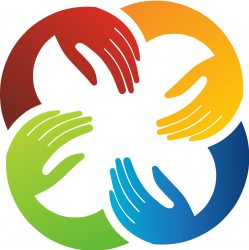👋Today is International Therapeutic Massage Awareness Day! 👋 Massage is generally considered part of integrative medicine. It’s increasingly being offered along with standard treatment for a wide range of medical conditions and situations. There are many health benefits of regular Therapeutic Massage and many health conditions that show improvement, these may include: 👋 Reducing stress […]
Wonderful anatomy
How fantastic is this image of the human cell. When studying Therapeutic Massage we spent my hours learning about Anatomy, Physiology and Pathology.These were some of my favourite subjects. “The most detailed representation of a human cell to date, obtained by radiography, nuclear magnetic resonance and cryoelectronic microscopy. ~ Valerie DeBourdeilles” Thank you https://www.facebook.com/healthystreet/ for […]
Benefits of Massage
Massage is generally considered part of integrative medicine. It’s increasingly being offered along with standard treatment for a wide range of medical conditions and situations.Some of the benefits of regular Massage may include: 👉Reducing stress and increasing relaxation 👉Reducing pain and muscle soreness and tension 👉Improving circulation, energy and alertness 👉Lowering heart rate and blood […]
Stressed?
If any of your loved ones have struggled with stress or anxiety this year, then massage therapy may be a good choice to help them finish this year on a high note. Massage is widely used in all cultures to evoke feelings of deep relaxation and reduced anxiety. The anxiety-reducing and mood-enhancing benefits of massage […]
Deep Tissue Massage
Deep tissue massage involves applying firm pressure and slow strokes to reach deeper layers of muscle and fascia (the connective tissue surrounding muscles) It’s used for chronic aches and pain and contracted areas such as a stiff neck and upper back, low back pain, leg muscle tightness, and sore shoulders. To find a qualified massage […]
How often should you have a massage?
Therapeutic Massage works better when received regularly. Much like going on one short run on the treadmill doesn’t prepare you for a marathon, and one salad doesn’t lead you to all your health & nutritional goals, one massage session cannot undo years of damage. Do how often should you get a therapeutic massage? The answer […]
How Does Massage Therapy Treat Fibromyalgia?
Article written by Katrina Hodgins On the following website: http://fibromyalgialiving.today/fibro-living/massage-therapy-for-fibromyalgia/ What to Know About Massage Therapy for Fibromyalgia Some people only need to hear the word “massage” and they melt. It feels good and eases your body pain when a massage therapist tackles your pain points. For those with fibromyalgia, massage therapy may be the symptom reliever you […]
5 Stretches and Exercises for Rotator Cuff Tears
By Amy Haddad Published: 06/13/2016 “If you’ve had a rotator cuff tear, physical therapy will be important to help you regain shoulder strength and range of motion. Here are examples of several typical exercises and stretches you may encounter on your road to recovery. 1. Pendulum swing Stand to the side of a table, steady […]
How can massage help with a rotator cuff injury?
“The rotator cuff is a group of four muscles and tendons that surround the shoulder joint, keeping the head of your upper arm bone firmly within the shallow socket of the shoulder. A rotator cuff injury can cause a dull ache either in the front or back of the shoulder, which often worsens when you […]
Massage Benefits for Carpal Tunnel Syndrome
What is Carpal Tunnel Syndrome? Carpal tunnel syndrome is a condition characterized by tingling, numbness and pain in the hand and fingers (particularly the thumb, index, middle and ring fingers). These symptoms are often the result of median nerve irritation in the wrist or forearm. Therapeutic massage can be helpful as a conservative treatment option […]
- 1
- 2
